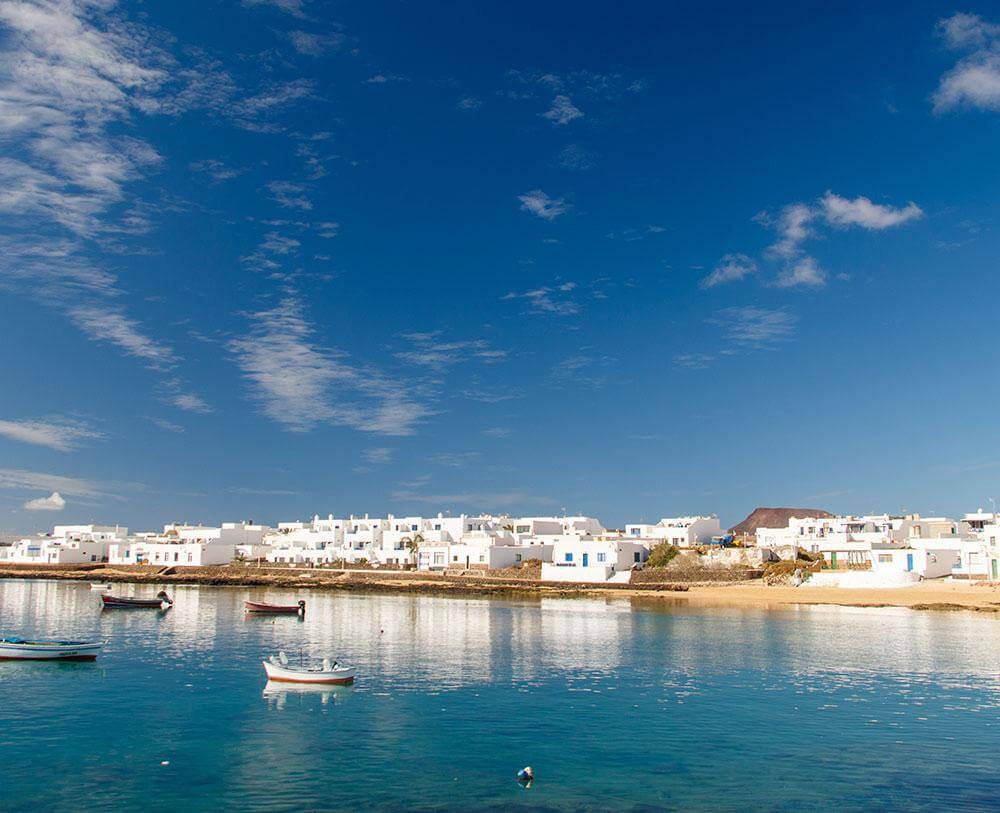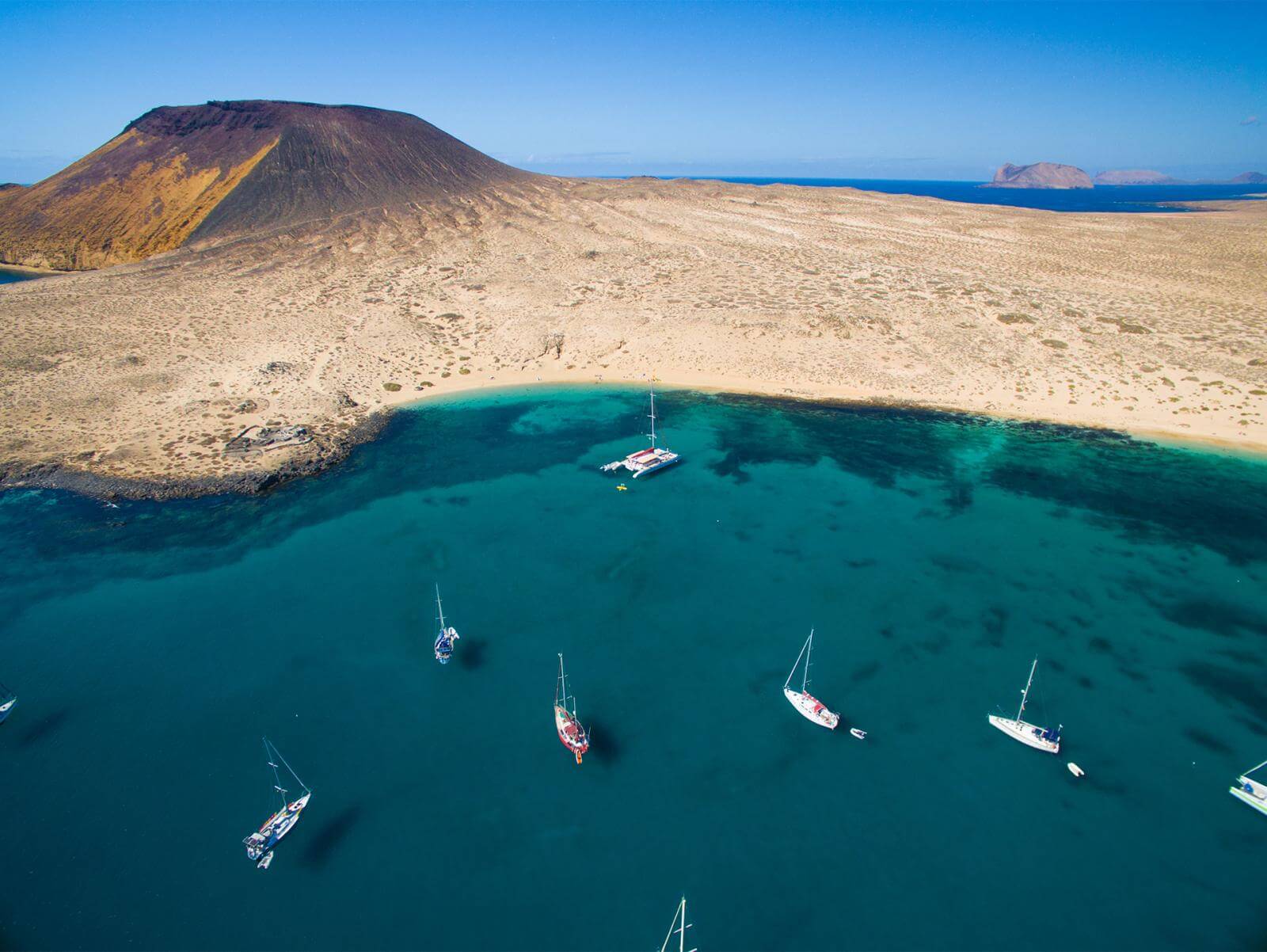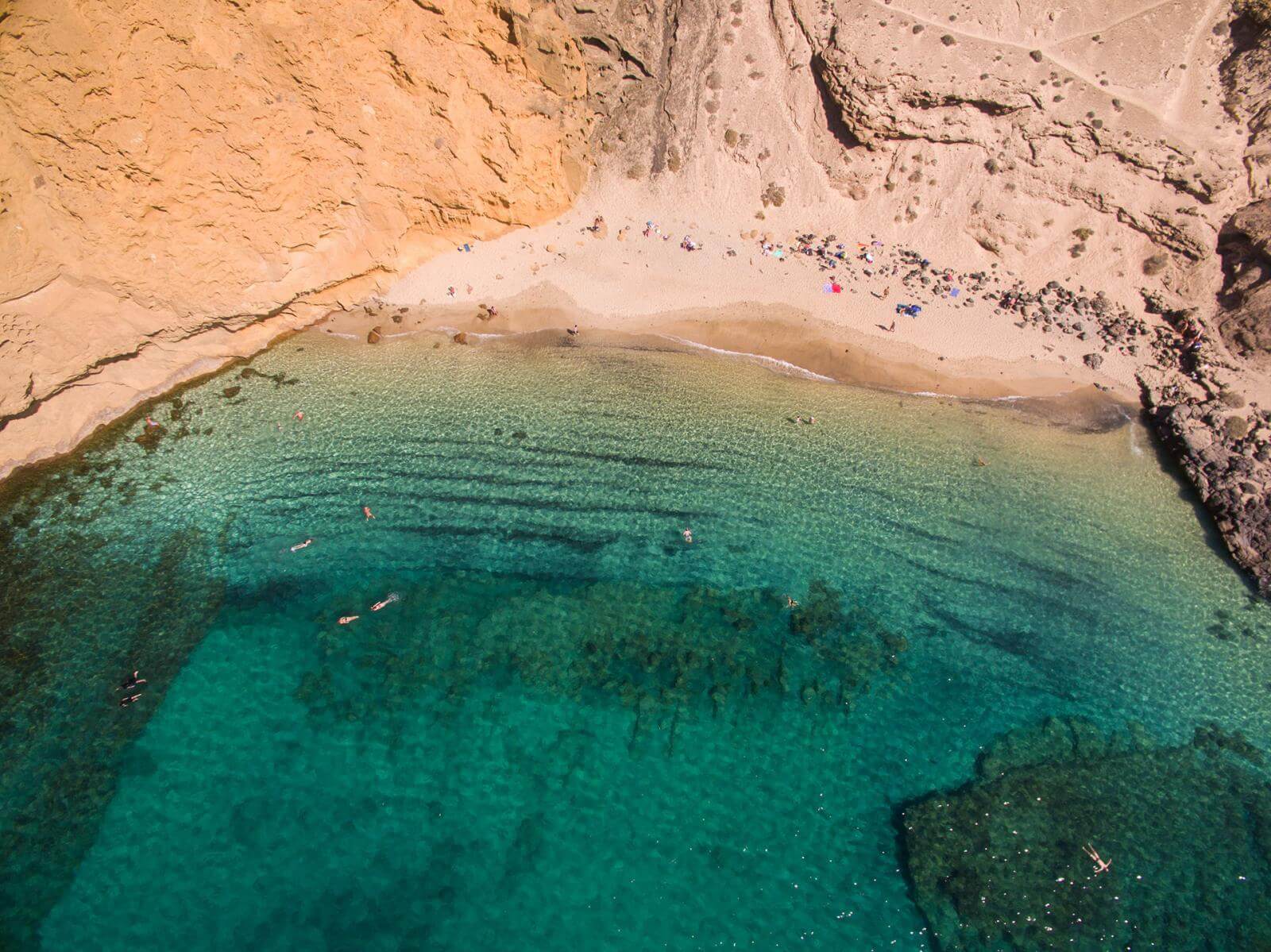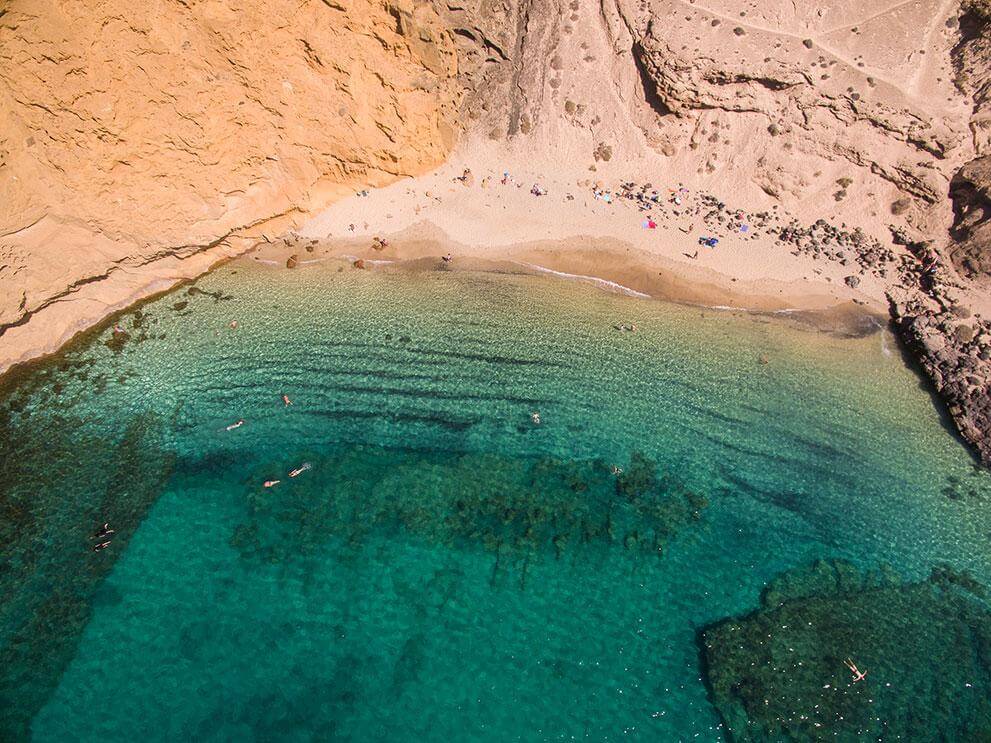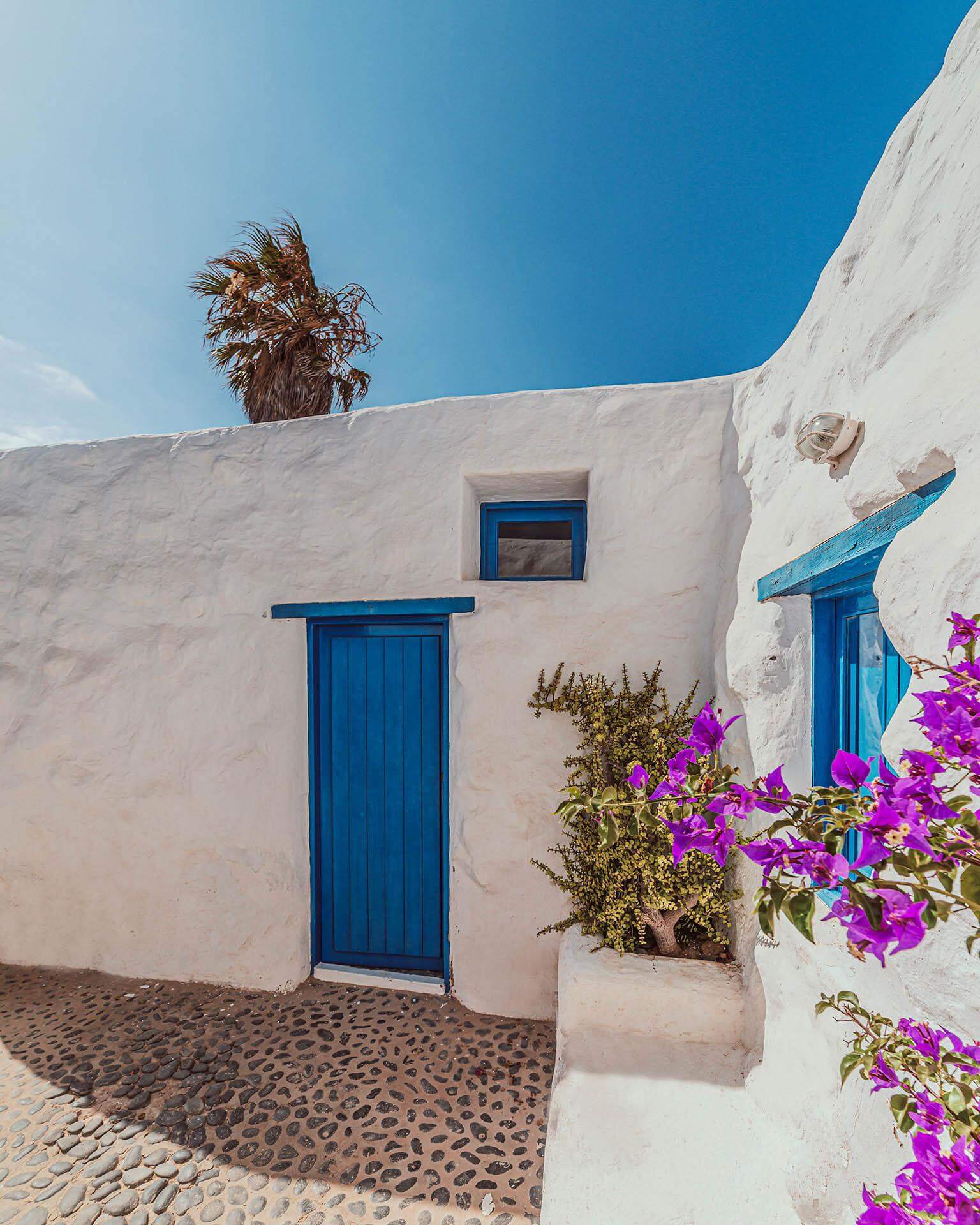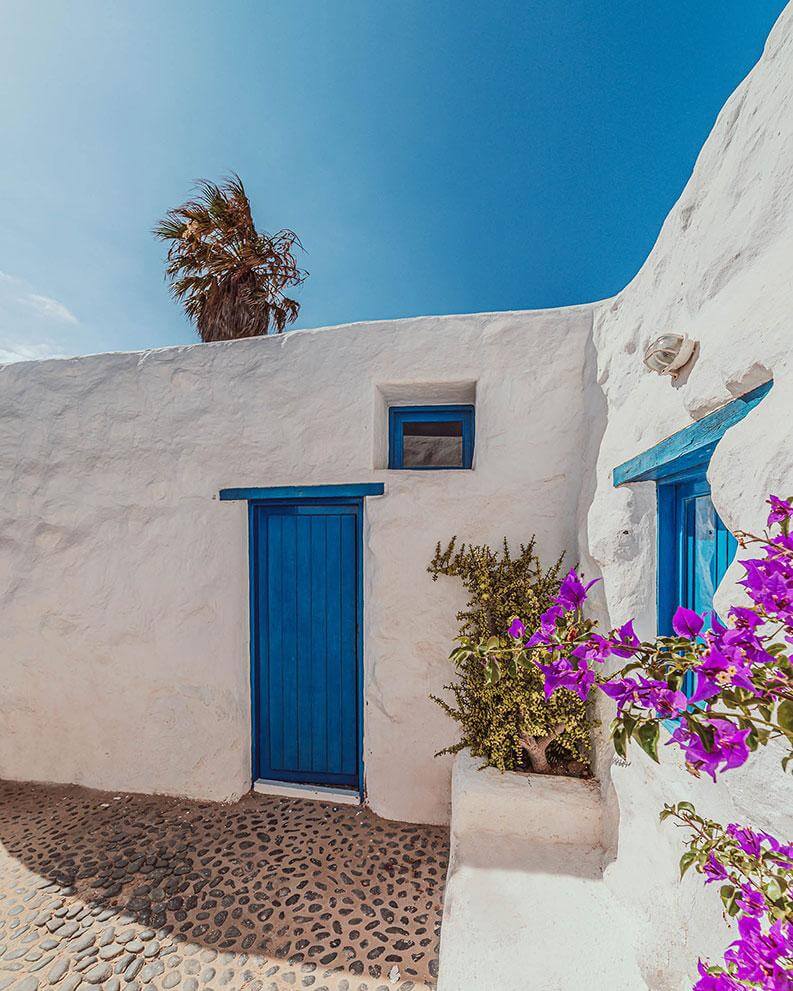In spite of being the smallest of all the inhabited islands in the Canary Islands Archipelago, La Graciosa has lots of areas that are worth a visit, surprising visitors with its complex variety and natural wealth of delightful beaches and coves. An idyllic setting that usually bears exceptional witness to weddings with the most romantic sunsets.
Caleta de Sebo
It is the larger of only two inhabited areas on the island, a delightful fishing village with whitewashed houses and unpaved streets, and barely any motorised vehicles to drive on them anyway. Caleta de Sebo is the only place on the island where there are any services to be found: a supermarket, doctor’s surgery, bike rental and restaurants located almost right on the beach and specialising in, you guessed: freshly caught fish. A delicacy for your taste buds and your other senses too, as you can contemplate the spectacular panorama of Riscos de Famara in Lanzarote while enjoying an excellent meal here.
La Laja stretches right from the doors of the houses, just a few steps from the pier where the boat comes in that connects the island with the northwest of Lanzarote. It’s a pleasant beach with golden sand and calm sea, perfect if we are travelling with children, where we can also find the local fishermen repairing their nets.
The essential beaches
La Graciosa is a paradise for anyone who loves sun and sea. It’s always difficult to answer the question “What beach shall we go to today?” But there are a few that are must-visits. About a 15-minute walk south of Caleta de Sebo is El Salado. It, La Francesa and La Cocina, a bit further on, form a trio of wonderful white sand beaches with crystal-clear, turquoise sea. At high tide, La Francesa turns into a lagoon of sorts and is great for snorkelling and spoting the variety of fishes that live in it.
You can only get to La Cocina, also known as the Montaña Amarilla beach, on foot (the walk takes about an hour and a half from Caleta de Sebo) or by bike (which you would have to leave a few metres before La Francesa), but it’s really worth it. It’s a little, unspoilt and often solitary cove sheltered from the sea currents, at the foot of the iconic Montaña Amarilla Volcano, which will be our point of reference the whole way here. The contrast between the volcanic yellow of the foothills and the turquoise blue and greens of the sea is striking.
In the north of the island, the sea is wilder and we have to be careful when swimming, but this is the area of coast that we simply have to visit on La Graciosa. It is Las Conchas, an amazing beach with white sand at the foot of Montaña Bermeja, from which we can see the uninhabited islets of Montaña Clara and Alegranza. The reds, ochres and blacks of the volcanic earth, the blue of the sky, the emerald green of the sea, the white of the sand and the froth on the waves… Nature really used all of her colours here.
Pedro Barba
This is the island’s second residential area, but nobody lives here permanently, as most of the twenty or so houses are only occupied in summer. About six kilometres from Caleta de Sebo, you can get here by bicycle or on foot along the trails that run along the coast, parallel to the impressive Riscos de Famara in neighbouring Lanzarote. After the walk and seeing the pretty little houses with their well-tended gardens, the small beach next to them looks very inviting for a relaxed dip.
Arco de los Caletones
Near Las Conchas Beach, in an area dominated by white sand and black volcanic rocks, stands this natural monument shaped by the constant force of the waves into four spectacular basalt arches that you can’t resist photographing, but be careful not to get within splashing distance of the sea.



